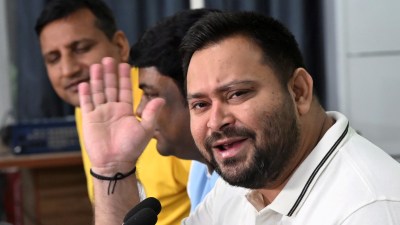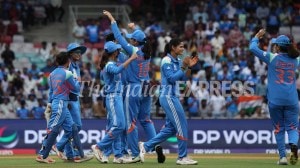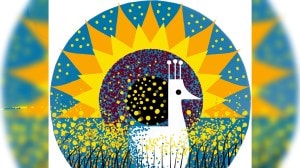I think therefore I’m not
Edward Said, author of the book Orientalism died recently. Orientalism is one of the few academic books to become a public best seller. It p...

Edward Said, author of the book Orientalism died recently. Orientalism is one of the few academic books to become a public best seller. It provocatively argues that all descriptions of “The Orient” by western scholars are distorted and racist, that every western observer throughout history has sought to construct “The East” as an abnormal irrational “Other”, the polar opposite of the normal, rational “West”.
Critics accused Orientalism of being a biased anti-West tirade. Yet it established Said as that entity often described as a “public intellectual”, that is, an independent scholar or thinker who does not restrict his learning to a small upper caste of snobby academics, but instead educates and stimulates a general audience.
So where is the Indian intellectual? Why is it that given the wealth of social science expertise here, no Indian has yet written a popular book like Orientalism or coined defining terms like ‘‘The Clash Of Civilisations’’ or the ‘‘End Of History’’?
In two separate articles published in the Economic and Political Weekly, historian Ramachandra Guha points to the reasons why the Indian liberal intellectual is in decline. First, the intellectual is being squeezed by the caste politics of the Left and the identity politics of the Right and being unable to find a new voice. Second, the nasty influence of NRI academics for whom “India is merely a resource on the road to scholarly advancement” is jeopardising Indian thought. These diaspora academics are creating impenetrable jargon like “aporia” and “bricolage” and simply exploiting India to satisfy the needs of north American universities, which have appointed them as the voice of India even though they are totally distant from this country. Guha believes that because of the trendy political correctness of most diaspora intellectuals, “a tradition of humanistic research in India that goes back almost a century is under threat.” The traditions begun by doyens like M.N. Srinivas who, decades ago, coined popular terms like “sanskritisation”, “vote bank” and “dominant caste” are being lost.
In other ways, the plight of Indian intellectuals is parallel to the predicament of the Soviet intellectuals as described by Russian academic Boris Kagarlitsky. When a new nation “awakens to freedom”, it creates its own “state-sponsored intellectuals”, whose roots lie in official policy rather than in the pulse of society. Thus India’s intellectual community is rooted in the Preamble of the Constitution rather than real social changes. Endless jargon-drenched works that juggle around the words, “civil”, “secularism”, “society”, “politics”, “democracy”, simply repeat tired official formulae.
Apart from Guha and a handful of others, there are hardly any academics who are taking the trouble to write for a general audience on cricket, emotion or popular history. There are almost no Indian equivalents (except Romila Thapar’s History of India) to Bamber Gascoigne’s The Great Mughals, or even the grippingly written Stalingrad by military historian Antony Beevor.
History in India is simply not seductively written; it is totally devoid of fun and romance because good writing is somehow seen as “non-scientific” and “non-serious”. In fact, Prof. Yashpal writes that in India school textbooks are so densely written, that the children who get poor grades are in fact far superior to those who memorise their way through exams, because the ones who do badly are those who “refuse to compromise with non-comprehension.”
Who have been the authors of the popular biographies recently? Patrick French on Gandhi. Katherine Frank on Indira Gandhi. William Dalrymple on the 18th century love story of James Kirkpatrick and Khair-un-nissa. Who has written the most talked about book on the BJP’s rise among the backward castes? A Frenchman, Christophe Jaffrelot. Beyond Turk and Hindu, a fascinating exploration of India’s religions, has been edited by two American academics. While undoubtedly brilliant young Indians like Sunil Khilnani and Sanjay Subrahmanyam have written on French and Portuguese history, most Indians, as Guha says, still “remain obsessed with the self”.
The dominance of Marxism on intellectual life has meant that there are relatively few explorations of vast tranches of tradition. There is no authoritative yet popular book, for example on the sadhu samaj apart from G.S. Ghurye’s Indian Sadhus, written in the 60s. There have been few scholarly explorations on say, the Juna akhara or on the Nirmohi akhara, so prominent now in Ayodhya politics. Academic Harsh Sethi believes that in India those best satisfying the definition “public intellectual” are those who sit amidst the public and whose discourses contain a ‘‘spiritual-religious quotient”. For Sethi, Gandhi is India’s greatest “public intellectual” and the 900-year old Udupi madhava matha is a premier intellectual institution.
As has been widely reported, liberal arts institutions are in crisis. The Indian Council for Historical Research and Indian Council for Social Science Research are beset by factionalism and government whims. There is a funds crunch. ICSSR gets a plan allocation of 12.9 crore. It has a staff of 250 and 27 institutions function under its aegis. Yet ICSSR fellowships pay only Rs 1800-3000. Lack of funds and bad libraries naturally means that Indian academics based in India simply do not get the opportunities to pursue original research. The lack of opportunity possibly drives intellectuals into political patronage and prevents them from becoming independent voices of dissent. The politicisation of the intellectual means that ‘‘jholawallah’’ and ‘‘knickerwallah’’ are two party political camps with few venturing to find the third way. Additionally, the dumbing down of Big Media has meant that there is little search for new nuanced voices.
But perhaps the single most important reason why the Indian intellectual is in decline is the massive and growing gap between the ‘‘intelligentsia’’ and the public. The mass turn towards new age gurus dispensing quick-fix feel-good answers is precisely because the knowledge-elite remains imprisoned in faddish social science-speak that addresses only an elite cabal of seminarists. Strange, for instance, that there is not a single book by an Indian analysing the Kumbh Mela for the 21st century or indeed an authoritative yet popular work on the Babri masjid cataclysm.
E-mail the Author






- 01
- 02
- 03
- 04
- 05

























